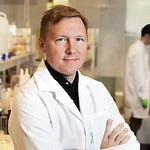Today Theral is joined by returning guests Chris Mason of Weill Cornell Medicine and Simon Fredriksson, CEO of Pixelgen Technologies, for a deep dive into the emerging field of cell surface proteomics and its power to illuminate both space biology and cancer research.
Chris Mason shares new insights from his work on the Space Omics and Medical Atlas (SOMA), the largest collection of astronaut health data to date. His latest findings confirm that space is more than a hostile environment—it’s a revealing one. Space is a kind of alternate reality that lets us test fundamental questions about biology and human health. Mason says changes in telomere length, immune system behavior, and skin inflammation during spaceflight are offering a new window into how the body responds to stress—whether in orbit or in disease states like cancer on Earth.
Enter Pixelgen’s breakthrough technology, the proximity network assay, which allows researchers to map how proteins are organized on the surface of immune cells with nanoscale precision. As Fredriksson explains, “Cells don't operate only by parts lists, but by how they're organized to do all their functions.” Their approach enables the first large-scale spatial mapping of protein-protein interactions in three dimensions using DNA sequencing—unlocking insights not possible through traditional single-cell or bulk assays.
In a collaborative effort, Mason’s lab and Pixelgen are applying this technology to study T-cell dynamics during spaceflight and in acute myeloid leukemia (AML). The results are striking: specific protein markers cluster together only during spaceflight and only at relapse in leukemia, offering clean, quantifiable signatures with clinical potential.
As Mason puts it, “This is a new modality of data—it forces you to ask, ‘Well, what does this mean?’ And you’re like, ‘Well, we’ve never seen it before.’ So we’re figuring it out.” Whether predicting relapse in cancer or designing better drugs for space and Earth, cell surface proteomics is opening a new frontier in biomedical science.











